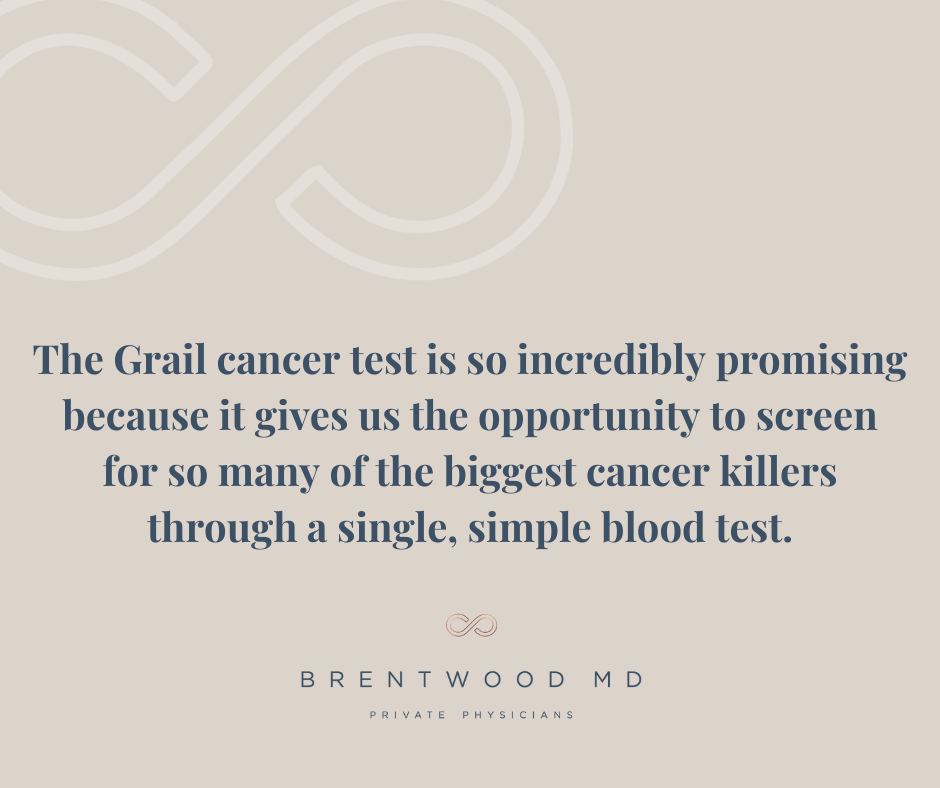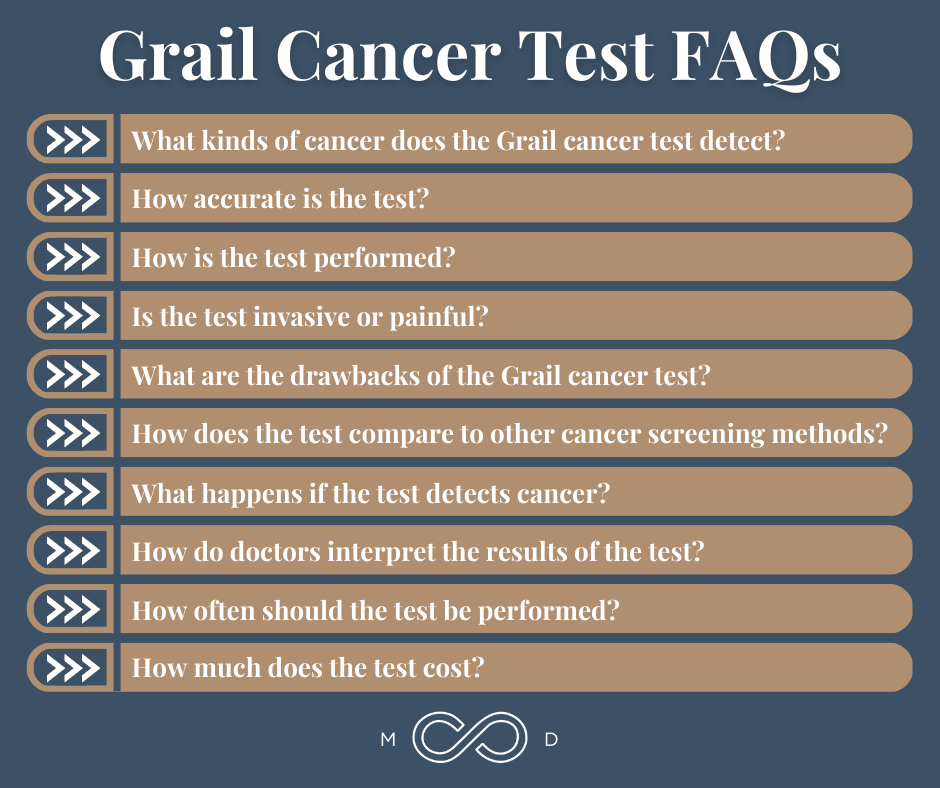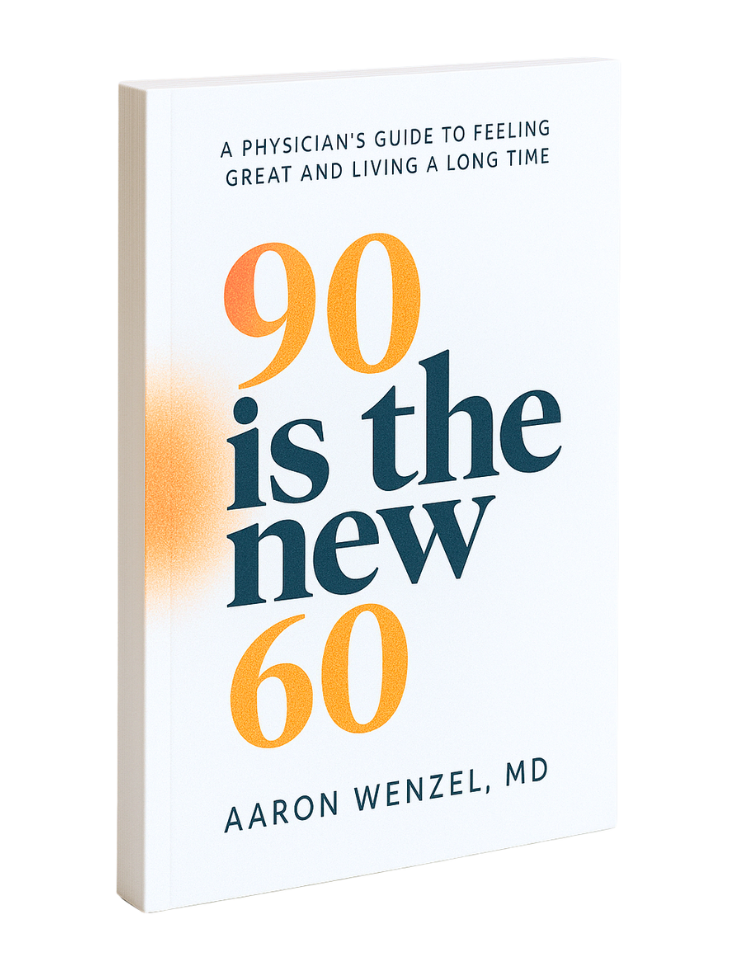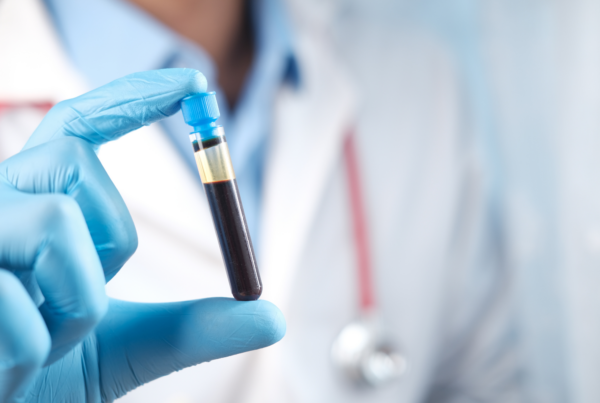The Grail cancer test is a relatively new player in cancer detection, and it’s a game changer.
Cancer is the second leading cause of death in the United States. Yet until recently, we’ve only had tests that screen for four of the 50 most common cancers. We’ve been able to screen for breast and cervical cancer in women, prostate cancer in men, and colon cancer in both men and women. But for some of the top cancer killers — like pancreatic, ovarian, liver, and kidney cancer — there was no way to detect them early through screening.
Instead, our approach has been reactive. When someone experiences symptoms of one of these diseases, we go hunting to find the cancer. The thing is, by the time symptoms develop, it’s late into the disease process.
The Grail cancer test is so promising because it gives us the opportunity to screen for so many of the biggest cancer killers through a single, simple blood test.
Grail Cancer Test Overview
A development this big may seem to have come out of nowhere, but the technology that powers the Grail test — also known as the Galleri test — has been around for some time. It’s the combining of that technology with one particular innovation that has made the Grail cancer test so stunningly effective.
Grail uses a type of DNA testing that’s been around for a while. It takes a blood biopsy — which, on the patient’s side, involves only a blood draw like any other — and searches for specific cancer DNA fragments in that blood. All cells in your body shed DNA into the bloodstream, cancerous or not. However, DNA shed from cancer cells will have cancer-specific markers that the Grail test can detect.
We do DNA testing all the time. The game changer here is that the Grail cancer test combines that DNA testing with computer algorithms trained to identify cancer-specific patterns in DNA shed from cancer cells. The technology is now so smart that not only can it detect these cancer signals, it can also tell you with a moderately high level of confidence where in the body the cancer signals originated.
For example, if the Grail test detects a cancer signal, it will also tell you that the cancer-specific DNA it identified has a high probability of coming from the upper GI tract, or the lower GI tract, or the ovaries. It doesn’t just tell you cancer exists — it tells you where to look for it.
This kind of testing is called multi-cancer early detection (MCED). We’ve had the ability to perform MCED tests for a while, but the process was laborious and difficult. The algorithm involved in the Grail cancer test makes it much quicker and simpler, taking over the identification process. Now, a pathologist doesn’t have to sit down, sort through all the information, and interpret the results.
DOWNLOAD OUR FREE EBOOK
Concierge Medicine is the future of healthcare.
Learn more about this refreshing alternative to traditional primary care, and decide if it's right for you.
Key Considerations to decide...
Is Concierge Medicine Right for You?
What’s more, Grail cancer test results are reliable. The technology has demonstrated a high number of positive test results when cancer is actually present, and a low number of false negative and false positive results.
When Should You Consider the Grail Cancer Test?
If the Grail cancer test sounds like a promising option after what we’ve discussed, the next step is to consider how it might fit into your health journey.
What kinds of unique health risks do you carry based on your age, gender, race, family history, and genetic predisposition? Family history, especially, is a strong indicator for a number of cancers.
Here’s the big question: Would early cancer screening be a useful piece of information in your health journey at this stage? If you’re in your 20s or 30s with no family history of cancer, the Grail cancer test might offer little value except as an option to file away for a later date.
But if you’re in your 30s with multiple family members who’ve had early cancer over multiple generations, you might want to consider layering in a screening tool like this 10 years earlier than your family’s youngest age of diagnosis.
The greatest risk factor for cancer is age — the longer you’re on the planet, the more opportunity your cells have to lose control of their reproduction and develop into tumors. Beyond age 50, for example, familial-based cancers really start showing up. As we age, we need to have an increasing level of curiosity and interest in taking advantage of screening technologies for cancers across the board.
In a standard storyline, a 52-year-old woman with ovarian cancer is unlikely to reach a diagnosis before she has abdominal pain, which is followed by imaging, leading to abnormal findings, then a biopsy, and then a diagnosis. And at that stage, unfortunately, it often ends in a bad outcome.
With tests like Grail, that storyline can change. If the same woman gets a multi-cancer early detection test every one, three, or even five years starting at age 42, doctors could identify her ovarian cancer early, while it’s small and curable with surgery. That’s a dramatically different outcome.
The Grail cancer test is simply a tool. Depending on your circumstances and risk factors, you may or may not have an interest in it. Maybe you want to deploy it immediately, or maybe it doesn’t fit in your health journey right now. Maybe this kind of testing is just too frightening to deal with.
There’s no wrong answer here. I just want you to have the opportunity to make an informed decision with careful consideration.
Grail Cancer Test FAQs
What kinds of cancer does the Grail cancer test detect?
The Grail cancer test detects over 50 types of cancer, the vast majority of which currently have no standard screening recommendations. View the full list here.
How accurate is the test?
When the Grail test detects cancer, it correctly predicts the origin of that cancer 89% of the time. Its false positive rate is quite low, about one in 200, and it has over 75% sensitivity to detect the presence of cancers that cause two-thirds of U.S. cancer deaths.
How is the test performed?
The test is performed through a single blood draw, and you don’t even have to fast beforehand.
Is the test invasive or painful?
No, this test involves a simple blood draw, just like you’d do for your usual lab work (except you don’t have to fast).
What are the drawbacks of the Grail cancer test?
On a financial level, the Grail cancer test is not covered by insurance, so it requires a cash investment. Typically, this amount is under $1,000.
On a psychological level, getting a diagnosis of potential cancer can be a traumatic experience. A positive result will force you to address your diagnosis.
After a positive signal, further testing may lead to no evidence of cancer, which we call a false positive result. This false positive happens about one in 200 times, which isn’t frequent, but it’s certainly significant for that one person. It can lead you on a medical safari that’s quite stressful.
How does the test compare to other cancer screening methods?
As mentioned above, the Grail cancer test screens for far more cancers than any traditional methods and provides a way to detect cancers we have no existing screening tools for. The implementation of an AI algorithm surpasses any other single cancer test that’s come before.
What happens if the test detects cancer?
If Grail detects a cancer signal, you’ll get a report back that says, “cancer signal detected,” along with the most likely source of that signal.
How do doctors interpret the results of the test?
Physicians get a secure email with a report for every test sent out in their name. They’ll go over the results with the patient and order further testing if needed.
How often should the test be performed?
Since this test is new, we don’t have a gold standard yet for frequency of testing for all people. For most people over 50 years old, though, the general consensus is that you should get a Grail cancer test done annually if you can afford the investment.
How much does the test cost?
Generally, the Grail cancer test costs less than $1,000.
How to Learn More About the Grail Cancer Test
If you want to find out more about the Grail cancer test, contact your primary care physician and ask if they have the ability to order the Grail Galleri test. They will be able to walk you through testing, and the results typically come back in less than two weeks.

Dr. Aaron Wenzel is a concierge physician specializing in the care of fast-moving entrepreneurs, executives, and public figures in the Nashville, TN area. Dr. Wenzel’s diverse life experience and extensive training in family medicine, emergency care, nutrition, and hormone replacement therapies give him the unique platform to provide unmatched care for his patients.










